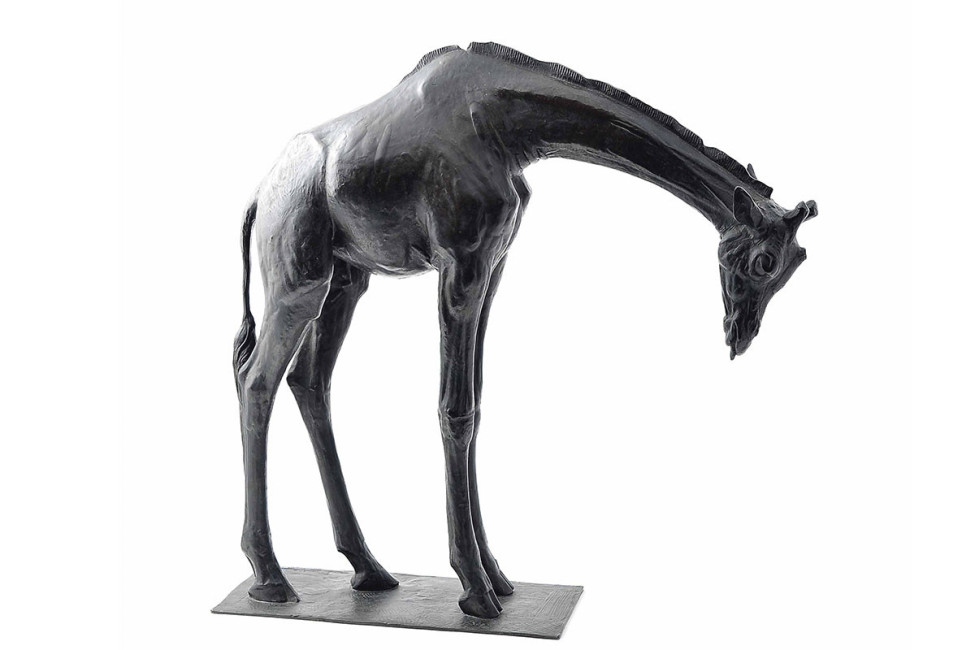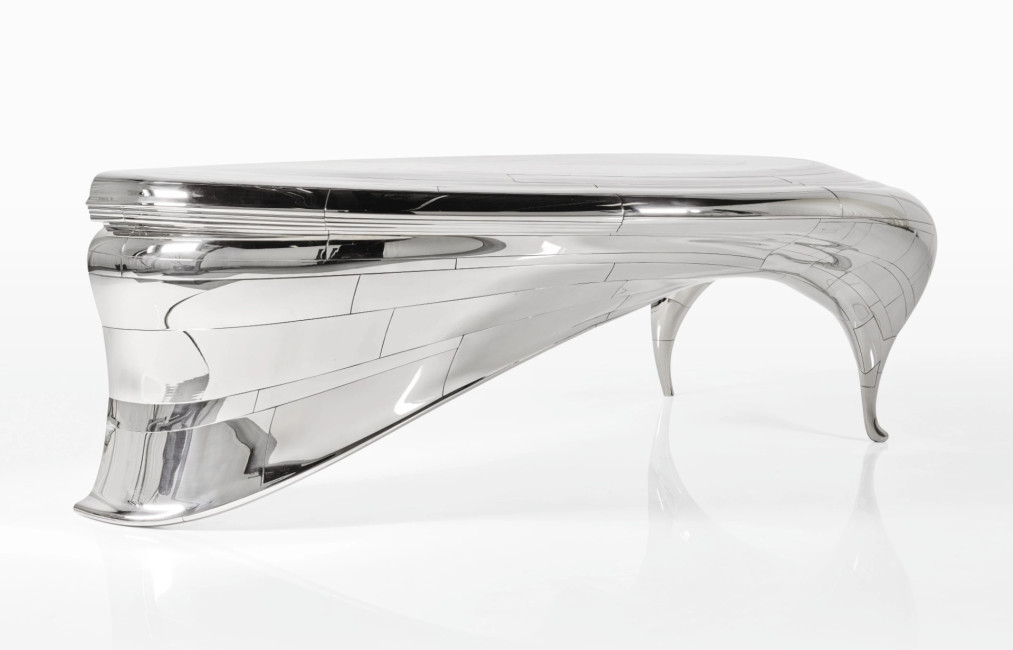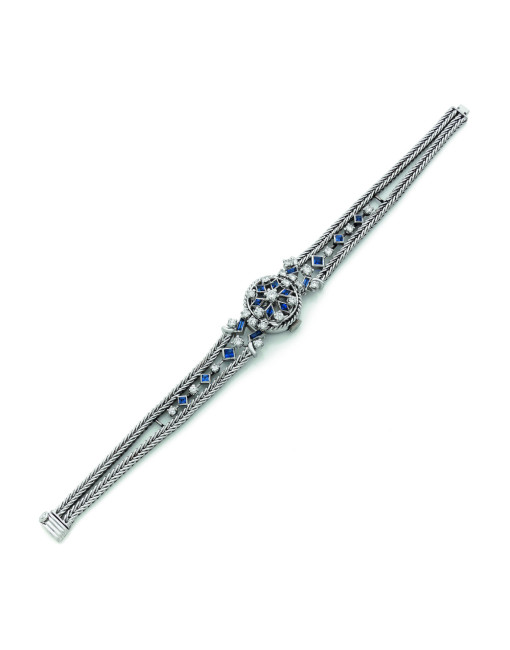Monaco on the art market chessboard
According to the latest Artprice annual report, 2024 stands out as the most dynamic year in the history of the global art market, with 1.2 million works auctioned and 804,350 transactions! Enough “to offset a 33.5% decline in overall turnover," mainly impacted by the shortage of million-dollar auctions...So where does Monaco stand?
It's not easy to carve out a place in the sun on the art market map. Competition is fierce. According to the Artprice 2024 annual report, the leading group is firmly established, even though emerging powers are advancing across the board.
Monaco in the top 100?
"The United States maintains its first place with 39% of the global art market. The European Union (excluding the UK) is now number one in the world in terms of number of transactions and number two in terms of turnover, with 18.5%, which corresponds to its rank as the third largest economic power in the world with a GDP of €16.97 billion in 2023. China, with 18.4% of global market share, is practically on a par with the European Union (excluding the UK)," observes the benchmark industry study, according to which the three leading powers make the art market a true soft power. "The United Kingdom maintains its third place by country with 15% of the global market. France remains in fourth place, with 7% of global turnover but this year has set three records: it is number two in the world in terms of transactions, just behind the USA; Paris is the fourth global market place, overtaking Beijing and Shanghai; and France is the European leader in terms of turnover,” Artprice further analyses, ranking Monaco amongst the top 100 cities in the world for the sale of works of art at auction.
Princely tradition
In Monaco, interest in art is a tradition. Since the 19th century, the Monégasque princely family has played a crucial role in promoting the arts, with the creation of museums and the establishment of major artistic events such as the famous Biennales des Antiquaires et de Sculptures. "Monaco has always been a place where antique dealers and galleries have had a presence, a bit like Beaulieu-sur-Mer where, at one time, there were around 40 antique dealers! They were gradually replaced by auction houses, which play a predominant role in the art market," says Joël Girardi, founder of Accademia Fine Art. Over the years, major auction houses such as Sotheby's, Artcurial and Christie's have established branches in the Principality, a move that coincided with the ban on international auctions in Paris. To counter the monopoly of French auctioneers, Sotheby's and then Christie's would organise very high-end sales in Monaco, in the splendour of the Sporting d'Hiver – it was all about champagne and tuxedos before the hammer fells - and for good reason: Monaco attracts an ultra-wealthy clientèle, who consider art a sound investment and a symbol of prestige. Over its two square kilometres, the Monaco microstate is home to a record number of collectors, investors and art dealers per square metre, such as David Nahmad; and the presence of an international population of businessmen, athletes and celebrities contributes to making the Principality a fertile ground for auctions, specially in the summer or during the Monaco Grand Prix, when art and luxury enthusiasts come together. The most sought-after sales involve Old Master paintings, jewellery and collectibles. Monaco is also an ideal platform for charity sales and themed auctions. Major auction houses also organise private and invitation-only sales, offering a select elite access to rare pieces. This strategy, combined with exclusive events, attracts potential buyers from all over the world.
One of Monaco's main attractions for art buyers and sellers is its favourable tax regime. Unlike other marketplaces such as London or New York, the Principality does not levy capital gains tax on the resale of a work of art. A Monégasque resident, or a Monégasque national, will therefore not be subject to capital gains tax on an auction sale (1); whereas, for example, in France, capital gains taxes apply to any property sold with a value exceeding €5,000 excluding VAT. Furthermore, the absence of inheritance tax for Monégasque residents makes it a strategic location for the transfer of collections. "According to Monégasque domestic law, gift and inheritance taxes apply in Monaco to property located in the Principality or taxed there, regardless of the domicile, residence or nationality of the deceased or donor and the heirs or donees. In Monaco, precious metals, works of art, collectibles and antiques are treated like other movable property for the purposes of transfer tax rates. Thus, the level of taxation depends on the degree of kinship between the deceased/donor and their heir/beneficiary/donee. As such, no tax is due in the direct line (between parents and children or grandparents and grandchildren) and between spouses," as Audrey Michelot of CMS points out.
Impact of digital technology on the Monaco market
Another phenomenon: with the rise of online auctions and new technologies, the Monaco art market is becoming increasingly digital. Auction houses now use platforms that allow buyers to bid remotely, thus expanding their audience and increasing sales records. NFTs and blockchain are also emerging on the Monégasque market, particularly with digital art galleries and sales attracting a new audience of tech-savvy investors. Monaco has no choice but to capitalise on these new trends. As Artprice notes, "the complete dematerialisation of the online art market now dominates across all five continents, relegating physical auction rooms to the history of the 20th century." Thierry Ehrmann, President of Artmarket.com and Founder of Artprice, believes that the liquidity of the global art market, which has been growing continuously since 2000, "is made possible by the spectacular online growth of auction houses with, on the one hand, a +720% increase in online auction listings and, on the other, live sales, which have grown by +210% worldwide, following the Covid pandemic. Such figures would normally have been expected for 2027-2029."
(1) "Bona fide residents of Monaco selling in Monaco did not pay the flat-rate tax (TF) as long as they had proof that what they were selling was located in Monaco - and proof of entry into the territory and ownership, of course! Be careful, because a Monaco residency card does not exempt the client from the TF. "The client can live in Monaco but be a French tax resident," emphasises Louise Gréther, Director of Sotheby's Monaco. "There are three possibilities for a Monégasque resident to be exempt from the TF: either they are a tax resident in a country other than France: they must provide a sworn statement (non-resident certificate) and an identity document; or they are a tax resident in Monaco: they must provide proof of this (a document from the Monégasque administration relating to income tax); or they are a "privileged Monégasque resident": they are a French tax resident, live in Monaco, and can prove that they have lived there for at least five years before 13 October 1962. They must provide proof of this."
By Milena Radoman, Monaco Economie



